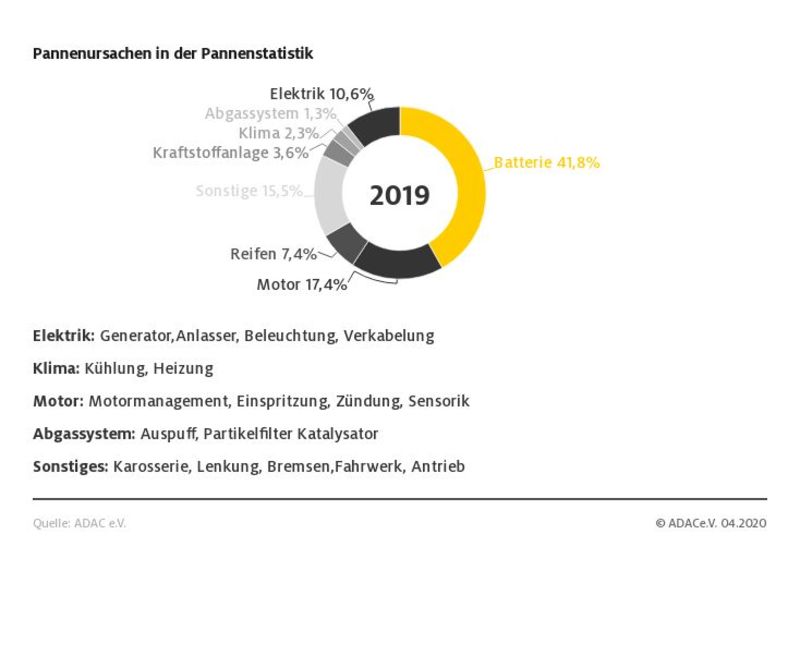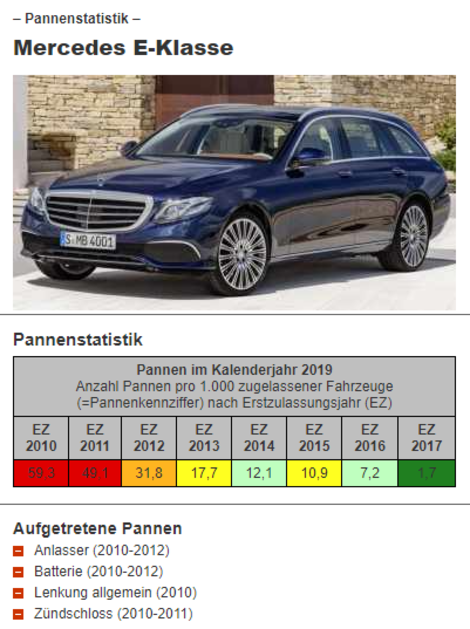
The German ADAC (Roadside Assistance and car lobby group) released statistics they called the Zuverlässigkeits-Hitliste (Reliability hit list). In it they compared the reliability of cars of 2010 and newer. Or so they said. They scored all cars from 2010 and newer against each other from the same year, assuming the sample size was sufficient. The ADAC offers roadside assistance, and their data is based on the cars they worked on that broke down on the side of the road.
Their subtitle is:
“The ADAC breakdown statistics determine which cars are the most reliable and which have broken down most - a good help when buying a used car.”
That’s a strong claim.
They claim to have enough data for 113 models of 25 manufactures. They defined the winners as being in the top 40% for all years that they were listed, and the losers those that are in the bottom 5% for at least 1 of the listed years.
This is their result:

Source:
These are the causes of the breakdowns:

So, 41.8% battery, 17.4% engine, 10.6% electric, 7.4% tires and some other issues. Looking at the issues of specific cars you see issues like spark plugs and timing belts for the older model years.
This is an example of the Mercedes E-Class:

So, compared to its competitors, very reliable for year 2017, above average in 2014 and 2016, average at 2013 and 2015 and bottom 5% in 2010 and 2011. Issues: starter, battery, steering and ignition lock.
So what is the issue I have with this so called reliability research? Well, they look at break downs on the side of the road where the owner calls ADAC, and compare this to the total number of registered vehicles of the specific type. This is problematic as it disregards:
- People who call non-ADAC roadside assistance, which is more widespread among fancier brands. They tend to have their own roadside assistance.
- It ignores reliability issues with which you can still drive to your prefered shop.
- It does not filter out clear maintenance issues. A dead battery in a 9 year old car is not a reliability issue, it is poor maintenance. A fouled spark plug or a snapped timing belt that was way past its replacement interval is not a reliability issue, it is poor maintenance. A form of user error. Poor maintenance is more frequent among cheap cars, and non-German cars depreciate the fastest in Germany...
So, the way they determine their sample size is highly flawed and the way they define reliability is highly flawed as well. Yet, they still claim to “determine which cars are the most reliable and which have broken down most - a good help when buying a used car.” This is a lie based on bad statistics and it permeates the common (mis?)conception in Europe that German cars are reliability leaders.
It is frequently claimed that the ADAC is in the pocket of German car manufacturers.
Do roadside assistance groups have claims this strong in other countries as well?